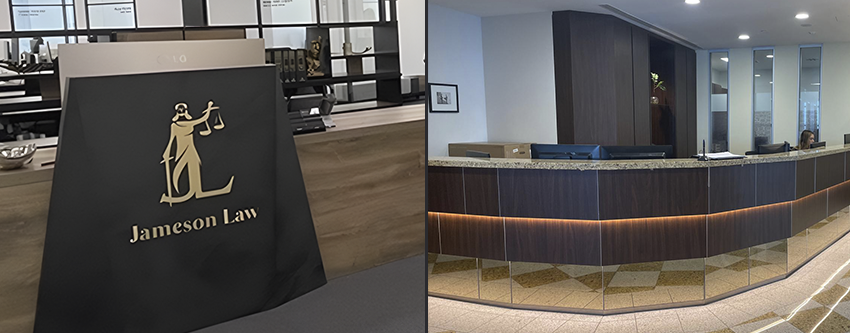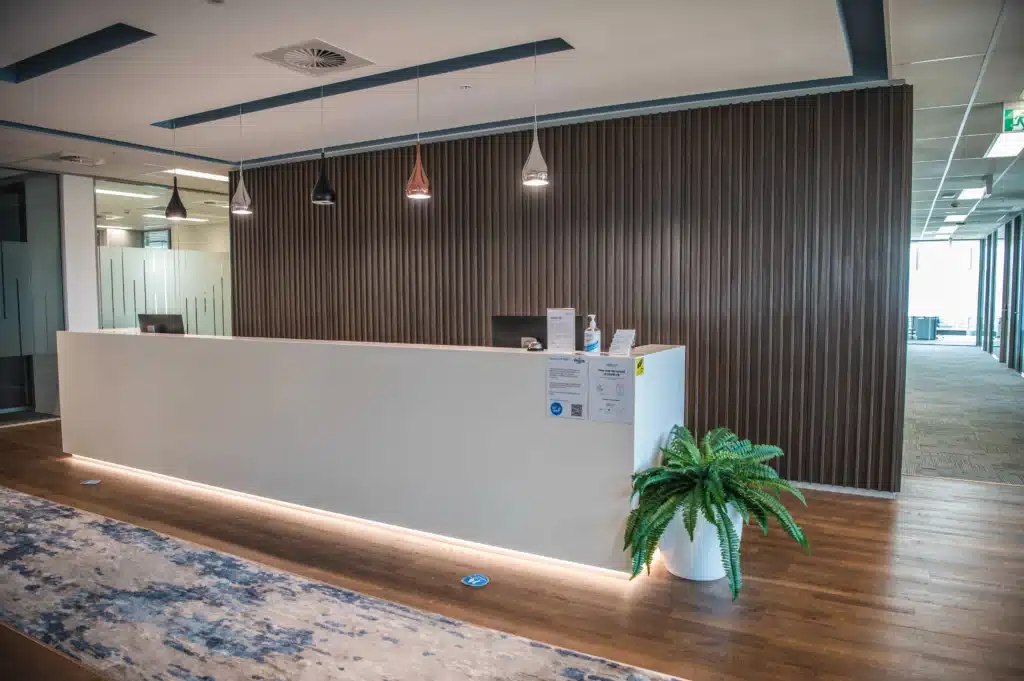Personal injury claims can be complex and varied, affecting individuals in numerous ways. At Jameson Law, we’ve seen firsthand how these claims can impact lives and livelihoods.
Understanding what personal injury claims are and their different types is essential for anyone who’s been hurt due to someone else’s negligence. This guide will break down the most common categories of personal injury claims, helping you navigate your legal options if you’ve been injured.
Motor Vehicle Accidents in Australia
Motor vehicle accidents remain a leading cause of personal injury claims in Australia. The Bureau of Infrastructure and Transport Research Economics recorded 106 road deaths in Australia in May 2023, underscoring the serious nature of these incidents.
Common Causes of Car Accidents
Speeding tops the list of car accident causes in Australia. For every 100,000 people, 4.18 lives were lost in road accidents, and there were 3.86 fatal crashes. Distracted driving, particularly mobile phone use, presents another major issue. A study by the Australian Automobile Association found that nearly 60% of Australian drivers admit to using their phones while driving.
Drink driving continues to plague Australian roads. Despite strict laws, alcohol plays a role in about 19% of fatal crashes (according to the Australian Institute of Health and Welfare).
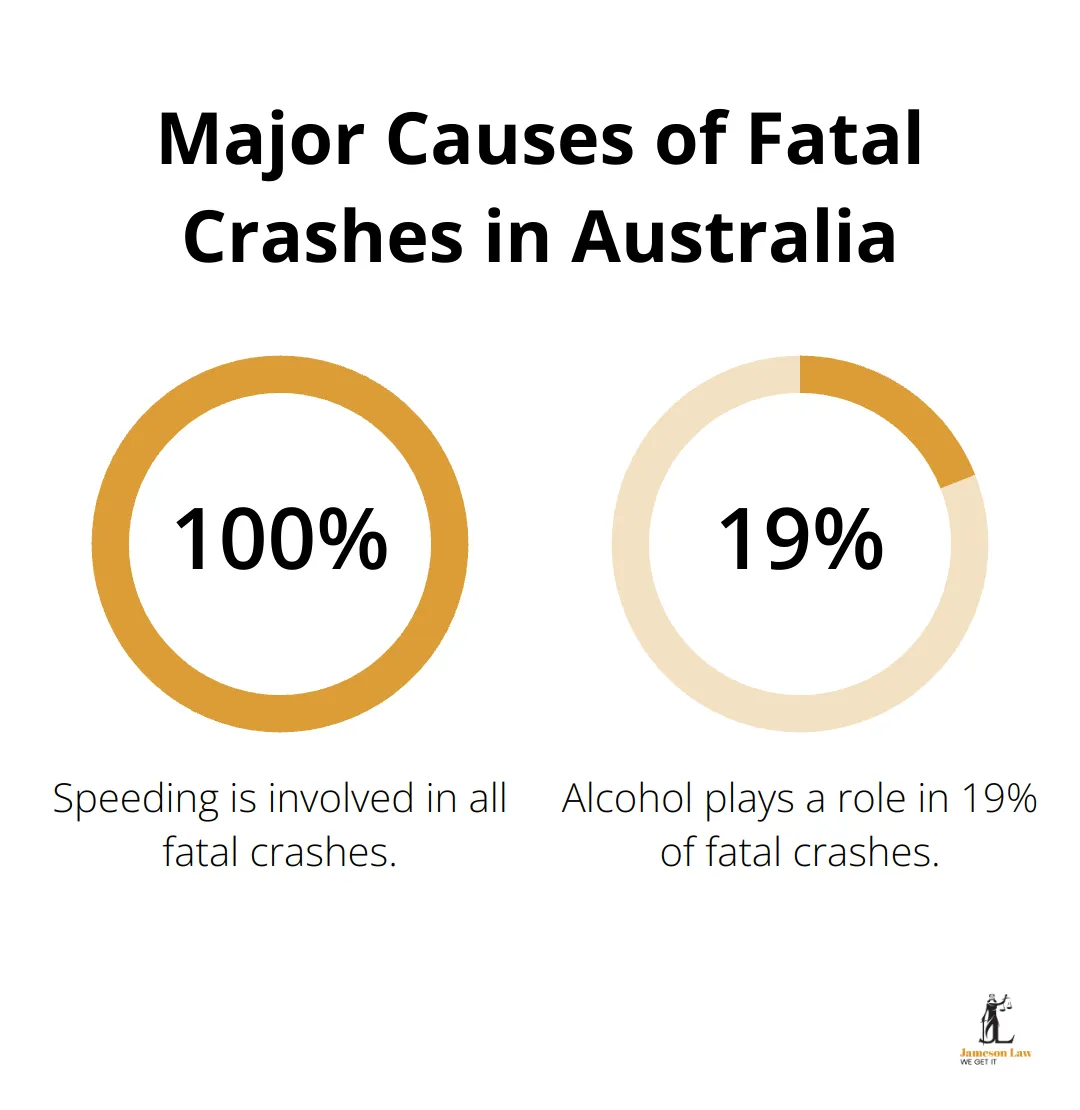
Motorcycle and Cyclist Accidents
Motorcyclists and cyclists face heightened vulnerability on Australian roads. In 2022, motorcyclists accounted for 17% of road fatalities despite representing only 5% of registered vehicles (as reported by the Australian Road Deaths Database).
For cyclists, intersections pose the greatest risk. A Monash University Accident Research Centre study found that 60% of serious injury crashes involving cyclists occurred at intersections.
Truck and Commercial Vehicle Accidents
Accidents involving trucks and commercial vehicles often result in severe injuries due to their size and weight. The National Heavy Vehicle Regulator states that heavy vehicles contribute to about 16% of road fatalities in Australia, despite making up only 3% of registered vehicles.
Fatigue significantly impacts these accidents. A National Transport Commission study found that 10% of truck drivers admitted to falling asleep at the wheel at least once in the previous month.
Compensation for Motor Vehicle Accident Victims
Compensation for motor vehicle accident victims varies by state in Australia. In New South Wales, the Motor Accident Injuries Act 2017 provides statutory benefits regardless of fault for the first 26 weeks after an accident. These benefits typically include weekly payments, medical expenses, and rehabilitation costs.
For more serious injuries, victims may qualify for lump sum compensation. This can include damages for pain and suffering, future economic loss, and future care needs. The compensation amount depends on the injury severity and its impact on the victim’s life.
Legal advice plays a critical role in navigating the complexities of motor vehicle accident claims. Victims should seek professional guidance as soon as possible after an accident to understand their rights and access the full range of available compensation.
As we move from road-related incidents to workplace injuries, it’s important to note that both areas require specialized legal knowledge to ensure fair compensation for victims.
Workplace Injuries in Australia
Common Workplace Accidents
Workplace injuries remain a significant concern in Australia, affecting thousands of workers each year. Safe Work Australia reports serious workers’ compensation claims, highlighting the scale of the issue.
Slips, trips, and falls account for 23% of serious claims, while manual handling injuries (such as lifting heavy objects) make up 39%. These numbers underscore the importance of proper safety training and equipment in the workplace.
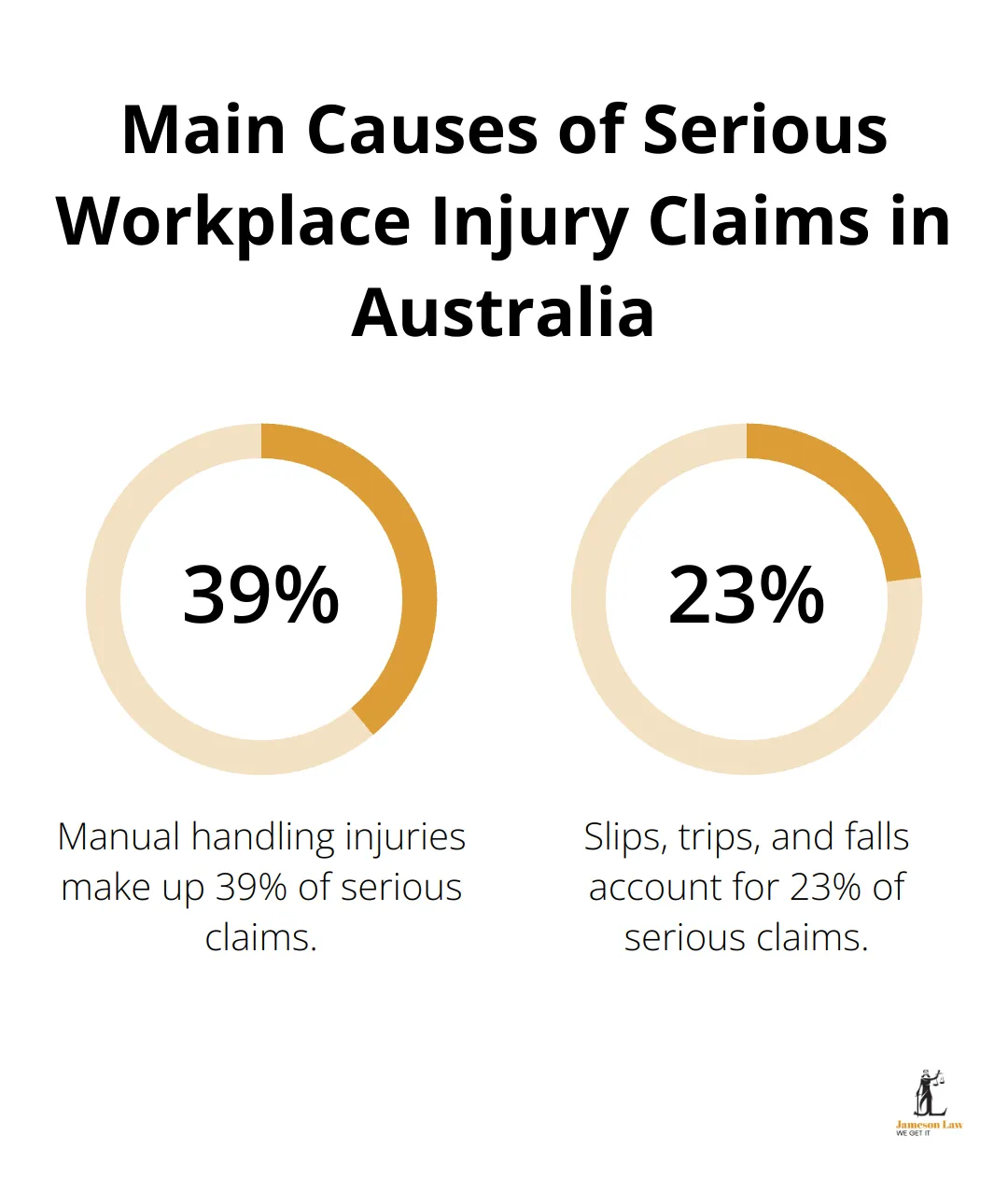
Machinery-related injuries are also prevalent, particularly in manufacturing and construction industries. The Australian Bureau of Statistics reports that these sectors have the highest incidence rates of work-related injuries.
Occupational Diseases and Long-Term Health Issues
Occupational diseases pose a significant long-term risk to workers’ health. Asbestos-related illnesses continue to affect Australian workers, with an average of 250 work-related deaths per year from 2003 to 2018.
Mental health issues receive increasing recognition as a workplace concern. Beyond Blue reports that one in five Australian workers has taken time off work in the past 12 months due to feeling mentally unwell. This statistic highlights the need for comprehensive workplace mental health strategies.
Workers’ Compensation Process
The workers’ compensation process in Australia varies by state but generally involves reporting the injury to the employer, seeking medical treatment, and lodging a claim with the relevant workers’ compensation authority. In New South Wales, workers must notify their employer within 30 days of becoming aware of their injury.
Time limits apply for lodging claims. In most states, workers must make claims within six months of the injury occurring. However, exceptions may apply in certain circumstances (such as for latent injuries or diseases).
Third-Party Liability
In some cases, a third party may bear liability for a workplace injury. This could include equipment manufacturers, contractors, or property owners. These claims are separate from workers’ compensation and can potentially result in additional compensation.
For example, if faulty machinery injures a worker, they may have a claim against the manufacturer in addition to their workers’ compensation claim. These cases can present complexities, and seeking legal advice will help navigate the process effectively.
Return to Work Programs
Return to work programs play a vital role in the recovery process. Safe Work Australia has published an independent research report by Monash University on return-to-work (RTW) outcomes for injured workers.
Employers must have a return to work program in place. This typically involves modified duties, reduced hours, or alternative roles to accommodate the worker’s recovery. The program should facilitate a safe and sustainable return to work, benefiting both the worker and the employer.
Workplace injury claims can present challenges, especially when dealing with complex cases or third-party liability. Expert legal guidance can prove invaluable throughout this process. As we transition to our next topic, we’ll explore another common type of personal injury claim: slip and fall accidents.
Slip and Fall Accidents: Understanding Your Rights and Responsibilities
Property Owner Obligations
Property owners in Australia must ensure their premises are safe for visitors. This legal duty of care includes regular maintenance, prompt hazard repairs, and adequate warning signs. The Australian Consumer Law and state-specific legislation outline these responsibilities, including liability for loss or damage suffered by a person if other goods are destroyed or damaged, or if land is affected.
The landmark case Australian Safeway Stores Pty Ltd v Zaluzna (1987) established that it is necessary to determine who is the owner or occupier of the premises where the accident occurred and whether a duty of care to the injured person exists.
Common Locations and Causes
Slip and fall accidents often occur in supermarkets, shopping centres, and restaurants. The National Slips and Falls Prevention Project found that in 2020-2021, 42% of hospitalised injury cases and 40% of accidental injury deaths in Australia were due to falls, resulting in 243,000 hospitalisations.
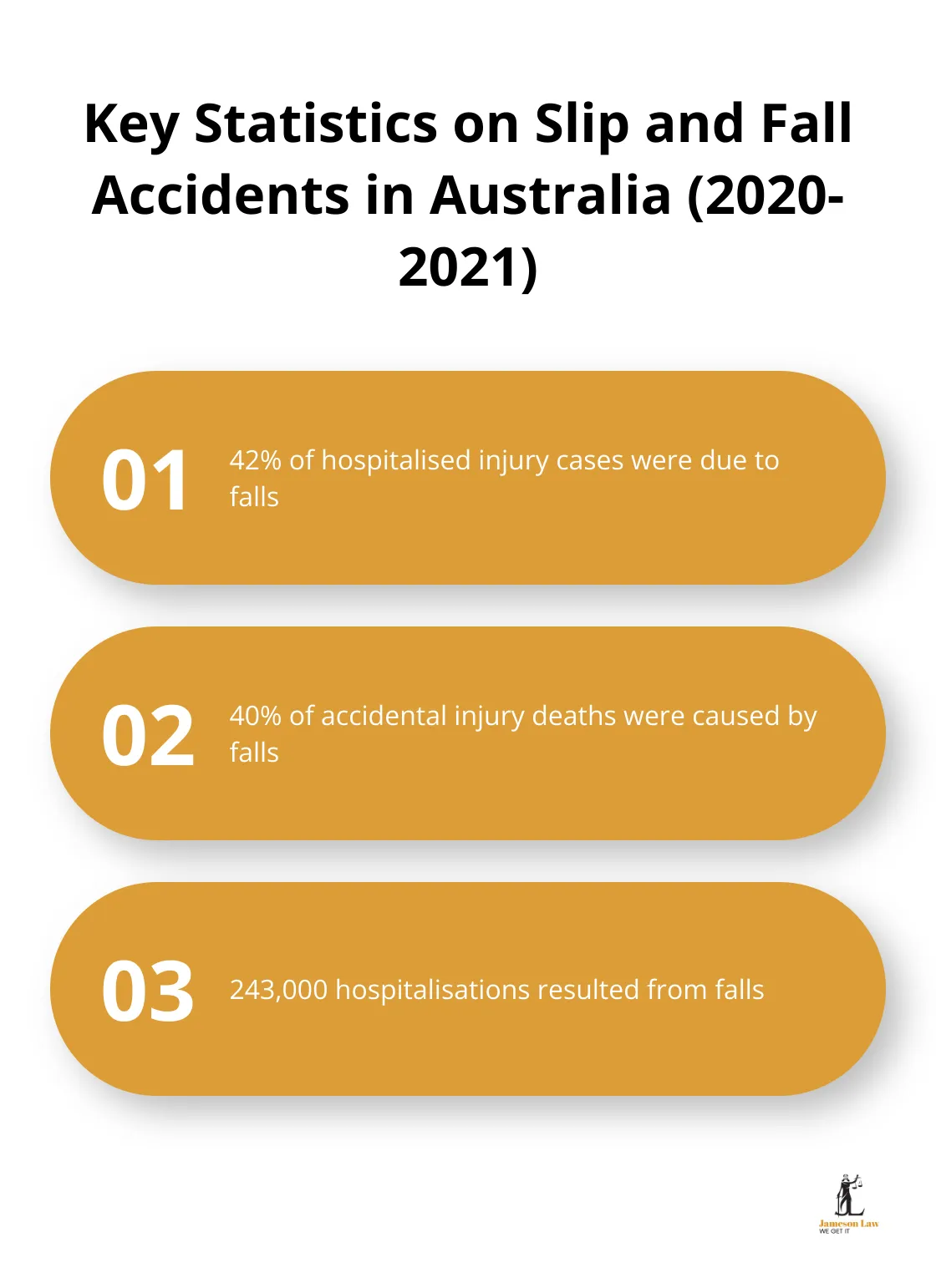
Wet floors lead the list of causes, with inadequate signage often contributing to accidents. Uneven surfaces, poor lighting, and obstacles in walkways also pose significant risks. In retail settings, spills and recently mopped floors account for many incidents.
Types of Injuries
Slip and fall accidents can result in injuries ranging from minor bruises to severe, life-altering conditions. Common injuries include:
- Fractures
- Head injuries: These can be particularly serious, with potential long-term cognitive effects.
- Soft tissue injuries: Sprains and strains (especially to the back and neck) frequently occur.
- Spinal cord injuries: While less common, these can have devastating, lifelong consequences.
Evidence Collection
Strong evidence supports a successful slip and fall claim. Take these immediate actions:
- Photograph the scene, focusing on the hazard that caused the fall.
- Report the incident to the property owner or manager.
- Obtain contact details of any witnesses.
- Seek medical attention promptly (even for seemingly minor injuries).
- Keep all medical records and receipts related to the injury.
The Australian Lawyers Alliance emphasises the importance of documenting all aspects of the incident and its aftermath to support your claim.
Compensation and Legal Action
Compensation for slip and fall victims can cover medical expenses, lost wages, and pain and suffering. The amount varies based on the severity of injuries and their impact on the victim’s life.
Time limits apply for lodging claims. In NSW, for example, the limitation period is generally three years from the date of injury. However, you should seek legal advice as soon as possible after the incident.
Each slip and fall case presents unique challenges. Professional legal advice will help you understand your rights and the strength of your claim. If you’ve suffered injuries in a slip and fall accident, expert legal support (such as that provided by Jameson Law) can guide you through the complexities of the legal process and help you secure fair compensation.
Final Thoughts
Personal injury claims cover a wide range of incidents, from motor vehicle accidents to workplace injuries and slip and fall accidents. Each claim type presents unique challenges and requires specific legal knowledge to navigate successfully. Understanding what personal injury claims are and their various forms will help anyone who has suffered harm due to another’s negligence.
The complexity of personal injury law highlights the need for professional legal advice. Jameson Law offers expert guidance across all types of personal injury claims. We provide comprehensive support throughout the legal journey, ensuring clients receive the assistance they need.
If you’ve been injured, take prompt action. Document the incident thoroughly, report it to relevant authorities, and seek immediate medical attention. Consult with a qualified personal injury lawyer to understand your rights and the legal processes involved. This will equip you to navigate the complexities of personal injury law and secure the compensation you deserve.









